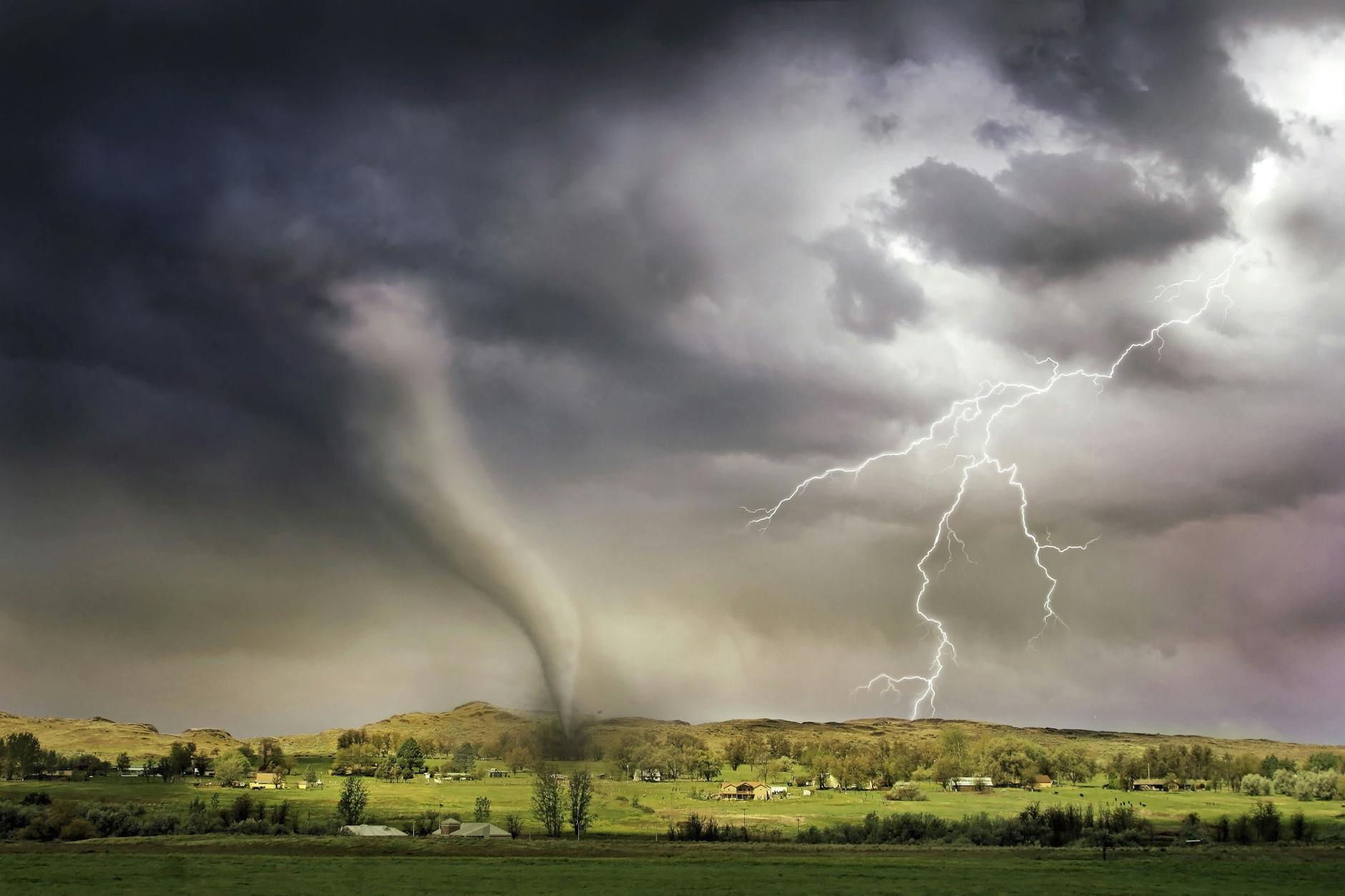Understanding the Urgency: Decoding Severe Weather Alerts
Severe weather alerts are not mere suggestions; they are critical communication tools designed to protect lives and property. Disregarding or misunderstanding them can have dire consequences. Understanding the different types of alerts, the technologies used to disseminate them, and the specific actions required in response is paramount for personal safety and community resilience. This article dissects the anatomy of severe weather alerts, emphasizing the inherent dangers of ignoring them and providing actionable guidance for navigating hazardous weather events.
The Hierarchy of Risk: Watches, Warnings, and Advisories
The National Weather Service (NWS) employs a tiered system of alerts designed to communicate the severity and imminence of weather threats. This system typically involves three primary classifications: Watches, Warnings, and Advisories.
Watches: A watch signifies that conditions are favorable for the development of severe weather within the specified area. It does not mean that severe weather is currently occurring, but rather that it is possible. A watch should serve as a call to vigilance. Individuals should monitor weather forecasts closely, stay informed about potential threats, and begin preparing for potential action. For example, a tornado watch indicates that atmospheric conditions are conducive to the formation of tornadoes. During a tornado watch, families should review their emergency plans, identify safe rooms, and ensure they have access to emergency supplies like flashlights, batteries, and a weather radio. Similarly, a severe thunderstorm watch means the potential for large hail, damaging winds, and isolated tornadoes exists. Homeowners should consider securing outdoor furniture and objects that could become projectiles.
Warnings: A warning indicates that severe weather is imminent or occurring in the specified area. This is the most urgent type of alert and requires immediate action to protect life and property. A tornado warning, for instance, signifies that a tornado has been sighted or indicated by radar. Individuals in the path of the storm should immediately seek shelter in a basement, storm cellar, or interior room on the lowest floor of a sturdy building. A severe thunderstorm warning means that a thunderstorm is producing or is about to produce damaging winds of 58 mph or greater and/or hail one inch in diameter or larger. During a severe thunderstorm warning, people should seek shelter indoors, away from windows, and avoid using electrical appliances. Flash flood warnings indicate that flooding is either occurring or is imminent. Immediate evacuation to higher ground is often necessary.
Advisories: Advisories are issued for less serious weather conditions that may still pose a hazard. These conditions are less threatening than those that warrant a watch or warning but can still be disruptive or dangerous if precautions are not taken. Examples include heat advisories, which are issued when high temperatures and humidity combine to create a dangerous heat index, and winter weather advisories, which are issued for light snow, freezing rain, or sleet. Even during an advisory, vigilance is key. Staying hydrated during a heat advisory and driving cautiously during a winter weather advisory are crucial for safety.
Beyond Traditional Alerts: Enhanced Communication Technologies
The dissemination of severe weather alerts has evolved significantly, leveraging technology to reach a broader audience more effectively. While traditional methods like radio and television broadcasts remain vital, digital platforms play an increasingly important role.
Wireless Emergency Alerts (WEA): WEA is a public safety system that allows authorized government agencies to send targeted text-like messages to mobile phones in specific geographic areas. These alerts are typically used for the most critical warnings, such as tornado warnings, flash flood warnings, and amber alerts. WEA messages are characterized by a unique tone and vibration, designed to grab attention immediately. They are location-based, meaning that only phones within the affected area will receive the alert, minimizing unnecessary disruptions.
NOAA Weather Radio All Hazards (NWR): NWR is a nationwide network broadcasting weather and hazard information 24 hours a day, 7 days a week. It is considered the “voice of the National Weather Service” and provides up-to-date forecasts, warnings, and other emergency information. NWR receivers can be programmed to receive alerts only for specific counties, further tailoring the information to the user’s location. Some NWR receivers also have a Specific Area Message Encoding (SAME) feature, which allows users to program the receiver to only activate for specific types of alerts. This prevents users from being alerted to events that are not relevant to their location or needs.
Mobile Apps and Websites: Numerous mobile apps and websites provide real-time weather information and alerts. Many of these platforms offer customizable alerts, allowing users to specify the types of weather events they want to be notified about and the geographic areas they want to monitor. Some apps also provide radar imagery, allowing users to track the movement of storms and assess the potential threat to their location. It’s vital to use reputable sources and verify information when possible.
The Psychological Impact: Alert Fatigue and Complacency
One of the significant challenges in effectively communicating severe weather alerts is addressing the psychological factors that can lead to alert fatigue and complacency.
Alert Fatigue: Frequent alerts, even those that do not result in severe weather impacts, can lead to alert fatigue. Individuals may become desensitized to the warnings and less likely to take them seriously. To combat alert fatigue, it is essential to understand the difference between watches, warnings, and advisories and to take appropriate action based on the severity of the threat. Filtering alerts to receive only critical warnings can also help reduce the risk of alert fatigue.
Complacency: Complacency arises from a perceived lack of personal risk. Individuals who have experienced numerous severe weather events without significant personal impact may become complacent and less likely to heed warnings. This can be particularly dangerous, as even familiar weather patterns can produce unexpected and devastating results. Actively acknowledging the potential dangers of severe weather and consistently practicing emergency preparedness measures can help overcome complacency.
Taking Action: Preparing for and Responding to Severe Weather
Receiving a severe weather alert is only the first step. Knowing how to prepare for and respond to different types of weather events is crucial for minimizing risk and protecting life and property.
Develop an Emergency Plan: A comprehensive emergency plan should outline specific actions to take in response to different types of severe weather. This plan should include evacuation routes, designated meeting places, and contact information for family members. It is essential to practice the plan regularly to ensure everyone knows what to do in an emergency.
Assemble an Emergency Kit: An emergency kit should contain essential supplies such as food, water, flashlights, batteries, a first-aid kit, and a weather radio. It should also include any necessary medications, personal hygiene items, and copies of important documents.
Stay Informed: Continuously monitor weather forecasts and alerts from reputable sources, such as the National Weather Service. Pay attention to local media reports and heed the advice of emergency management officials.
Seek Shelter: When a warning is issued, immediately seek appropriate shelter. This may involve moving to a basement, storm cellar, or interior room on the lowest floor of a sturdy building. Avoid windows and stay away from electrical appliances.
Follow Official Instructions: Heed the instructions of emergency management officials and local authorities. They are best equipped to assess the situation and provide guidance on how to stay safe.
After the Storm: After the severe weather has passed, be aware of potential hazards such as downed power lines, debris, and floodwaters. Avoid driving through flooded areas and report any damage to the authorities.
The Human Cost: Case Studies of Alert Disregard
History is replete with examples of the devastating consequences of ignoring severe weather alerts. Analyzing these case studies underscores the critical importance of heeding warnings and taking proactive measures to protect oneself and others.
Hurricane Katrina (2005): Despite ample warnings about the potential for catastrophic flooding in New Orleans, many residents failed to evacuate, resulting in significant loss of life and widespread destruction. The lack of preparedness and the failure to heed evacuation orders were major contributing factors to the tragedy.
Tuscaloosa Tornado (2011): A powerful tornado struck Tuscaloosa, Alabama, causing widespread damage and fatalities. While a tornado warning was issued, many residents did not seek shelter in time, highlighting the need for prompt action and effective communication strategies.
Moore, Oklahoma Tornado (2013): Another devastating tornado struck Moore, Oklahoma, resulting in significant loss of life and property damage. Despite the issuance of tornado warnings, many residents were caught off guard, emphasizing the need for community-wide preparedness and awareness campaigns.
These examples serve as stark reminders of the potential consequences of ignoring severe weather alerts. By understanding the risks, staying informed, and taking appropriate action, individuals can significantly reduce their vulnerability to severe weather hazards. The danger of ignoring severe weather alerts is real, and the consequences can be devastating. Proactive preparation and immediate response are not optional; they are essential for survival.





